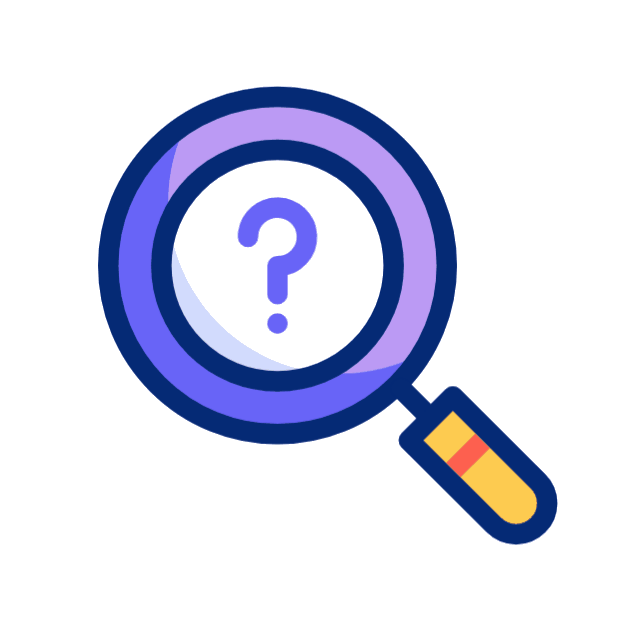
Can you share more about your personal experience and how it influenced your decision to specialize in neuropsychological work? How has this journey shaped your therapeutic approach?
Thank you for asking, this is a great question, and it’s a bit of an interesting journey. I’ve been intrigued by anatomy, psychophysiology, and health since I can remember—since high school, to be precise—I started studying nutrition and health, and became the quintessential hippie of the 60’s. I was thinking that health or nutrition services would be my career path. There were many interests I had, but health was the basic platform that I always rested on.
Fast-forwarding to grad school and a lifelong health advocate, I pursued a degree in psychology, reaching a master’s and eventually a doctorate in clinical psychology. During my doctoral studies, I became even more intrigued by the brain. Before my graduate studies I worked for a functional medical doctor which stimulated my increased interest in brain and neuroscience. Although I was always interested in neuroscience, I lacked the confidence to delve into neuroscience for quite a while. During my fellowship (postdoctoral), I experienced a major car accident, a rollover, which I shouldn’t have walked away from. For 10 years dealing with the injuries from that accident including a traumatic brain injury, chronic pain, somatic inflammatory challenges. I tried multiple types of medical interventions that led me to discovering neurofeedback. This treatment experience influenced the direction of my career.
I was already a licensed psychotherapist, running a private practice when my clinical supervisor, who was benefiting from neurofeedback treatment, encouraged me to try it. Despite thinking I had tried everything; I gave it a shot. The results from the neurofeedback treatments were like night and day with my symptoms. Initially I was struggling with brain fogginess, chronic pain, and mental challenges I had not experienced before the accident. I was in my 50s at the time and concerned about the number of challenges that I faced. As an aging adult I did not have much hope things would change for the better. 12 weeks into the treatment plan, I felt significantly better.
Impressed by the results, I decided to purchase a neurofeedback machine for personal use. Experimenting on myself and others, I continued educating myself about it. The life-changing results prompted me to offer it to my psychotherapy clients, friends, and family for free as I learned more about this modality. Some people were receptive, others were resistant yet allowed me to practice with them. After many hours of practice and education I began shifting my practice from psychotherapy only to offering neurofeedback and biofeedback. Slowly over the last 15 years, my practice has shifted primarily to neurofeedback rather than psychotherapy.
This transformation brought together my past interests in alternative medicine, holistic care, and maintaining a healthy body and brain. I believe it was destiny, a spiritual intervention, that turned a terrible accident into a fulfilling career helping others. Many of my clients have tried various treatments and are at a point where conventional advice is “as good as it gets,” but they refuse to give up. That’s how this specialization in neuro and biofeedback, with a focus on holistic health, evolved from merely psychological interventions to a specialized mental health treatment array of services.
Given your background in neuropsychology and experience with neurofeedback, how do you integrate this cutting-edge technology into traditional therapeutic approaches to enhance the healing process for your clients?
I think one of the inherent challenges that many practitioners face is the transition between psychotherapy and neurotherapy. They are distinct practices, and for those who are full-time psychotherapists, the question arises: how do you integrate neurotherapy, or do you make a more significant shift? I began by integrating neuro and biofeedback gradually, offering neurotherapy as a free intervention to patients. I explained that I was learning, undergoing credentialing, and seeking feedback on their responses.
As I observed more drastic responses compared to months or even years of traditional therapy, I delved deeper into how to make this a neuro-centric practice rather than a blend with psychotherapy. Balancing both in the same session proved challenging due to the traditional 50-minute hour structure of both psychotherapy and neurotherapy. In the early stages of my transition, I would connect the person with electrodes, explain biofeedback, highlight the differences between the approaches, and then engage in psychotherapy dialogue. However, I found it challenging to stay focused on psychotherapy while attending to the demands of neurotherapy.
Now, I keep them separate. If a patient needs psychotherapy, I provide it separately. If they already have a therapist, which is common, I see neurotherapy as a great compliment to the psychological services they are already receiving. Their psychotherapist can observe the patient’s shifts and changes each week after neurofeedback sessions.
When I mention neurofeedback, I am referring to the variety of interventions that include biofeedback and neurofeedback. This is a holistic approach to changing the brain through feedback. Both neurofeedback and biofeedback are grounded in the psychological principle of operant conditioning. This psychological principle focuses on changing behavior through feedback. In psychotherapy, this is achieved through verbal or didactic reinforcement. In neurofeedback, the same principle is applied using stimuli to the brain, typically a visual or auditory stimulus, to reinforce desired brain activities.
My commitment is to help people overcome lifelong trauma, PTSD, attentional problems, anxiety, and various mental health disorders. After seeing patients for extended periods and wondering if I had exhausted all my tools, I felt a need to find more effective ways to alleviate their suffering. This led me to explore neurotherapy and a primary intervention. I started small with one amplifier for informal research with family and friends, I saw quick improvements. Encouraged, I pursued more education and acquired various equipment—10 to 12 different amplifiers and devices. The interventions I use depend on each patient’s unique presentation, emphasizing a personalized and non-cookie-cutter approach.
What type of services do you offer?
I advertise myself as a biofeedback, neurofeedback practitioner. Biofeedback and neurofeedback share similarities in their application although they differ in the way the intervention is performed. We provide both biofeedback and neurofeedback services. We educate the patient on the differences and benefits of both neuro and biofeedback. In addition to Neuro and Biofeedback, we offer photobiomodulation, which involves light science therapy. This therapy explores the effects of light, particularly infrared light, on reducing inflammatory responses in the brain and body. Infrared light therapy can support the body by reducing inflammation, increasing blood flow and parasympathetic activation. Reduced inflammation can facilitate communication between the gut and the brain. The gut is called our “second brain” because of the number of neurotransmitters in our gut.
Another practice I engage in is frequency medicine which is a form of neurostimulation with historical roots dating back to the 1800s. The tenants of this practice are grounded in Acupuncture. Historically, the doctors of yesteryear used elevated heat levels in the body to identify where the sickness was located. Based on these historic modalities, neurostimulation gives new opportunities to change the frequency of our body and brain. I’ve also incorporated metabolic testing over the last couple of years, recognizing that some individuals face challenges in their healing process due to underlying medical issues such as thyroid problems, glandular issues, or diabetes. Physiological challenges such as these can interfere with the brain’s progress in neurotherapy. We also offer traditional psychotherapy. Furthermore, we provide health and lifestyle coaching because it’s an integral part of the holistic approach. This includes psychoeducational sessions on how to care for the brain and the body during and after treatment to support the restored brain. Our approach is purposeful to help patients learn to maintain overall health and psychological education on self-care.
Your use of advanced qEEG brain mapping is intriguing. Could you explain how this technology works and how it contributes to the assessment and treatment planning process in your practice?
The quantitative EEG, often referred to as QEEG or a brain scan, is a non-invasive in-office procedure. During the session, they are connected to an electrode cap, experiencing no discomfort, shocks, or stimuli. While it may induce slight fatigue, individuals remain capable of driving home after the exam.
This procedure is crucial for practitioners to determine the best course of care. With sophisticated software and equipment, we can examine the brain wave patterns and assess functional connectivity levels for the patient. This proves to be beneficial for individuals with a history of concussions and trauma where blood rushes and contusions affect brain function over time. Despite conventional medical advice suggesting full recovery in six months, many individuals experience ongoing issues year after year once they have had a blunt force trauma to their skull leaving them seeking alternative solutions.
The quantitative EEG involves a 19-point assessment, collecting data to identify deficiencies in the brain’s ability to connect appropriately. The assessment relies on a normative database for comparison, pinpointing areas of dysregulation in the brain. This assessment, for practitioners like me, is crucial in understanding a patient’s symptom profile and enables us to tailor individualized treatment protocols for the patient’s treatment plan.
Without the quantitative EEG, crafting effective treatment plans becomes challenging, as it provides valuable insights into the patient’s unique challenges and helps set up protocols for their course of treatment. In contrast to the lengthy course of psychotherapy, neurofeedback typically involves around 40 sessions, delivered more frequently over four to six months.
This more aggressive approach has proven effective in addressing long-standing issues such as panic attacks, traumatic brain injury, depression, anxiety, PTSD and a number of maladies. The process of intervening with neurofeedback and the Qeeg provides individuals, who may have suffered for years, with the opportunity and hope to return to a more functional way of living. There is significance in using a brain scan (qEEG) in guiding targeted and efficient treatment, focusing beyond mere symptom management.
In your extensive career, you’ve likely encountered various therapeutic modalities. Could you highlight some evidence-based practices within neuropsychology that you find particularly effective, and how do you incorporate them into your clinical work?
Some of this aligns with my previous work as a psychotherapist for many years. I utilized evidence-based practices such as solution-focused practice, cognitive-behavioral therapy, and trauma-based cognitive-behavioral therapy. These approaches are didactic and talk therapy modalities. With the introduction of neurofeedback and biofeedback into my practice, I’ve shifted away from traditional psychotherapy modalities. Neurofeedback itself is an evidence-based practice, as is biofeedback. Photobiomodulation also has its own body of research supporting its efficacy. These evidence-based practices form the foundation of my work as a neuro practitioner.
While some patients may not engage in psychotherapy, I still incorporate elements of redirection verbally during sessions. My reliance on traditional psychotherapy modalities has decreased significantly due to the compelling evidence of neurofeedback’s effectiveness. However, the complexity of cases, especially post-COVID, sometimes requires a multi-layered approach. This includes interventions like biofeedback, neurofeedback, photobiomodulation, and traditional lifestyle changes. Patients often have a multi-layered approach tailored to their unique needs.
I acknowledge the challenges patients face in following through with all aspects of the treatment plan. As humans, we have limitations, and I set realistic expectations while encouraging adherence. Additionally, my extensive education in biology allows me to have a holistic view of potential biological issues, and I can refer patients to other practitioners when necessary.
This neuro practice is not exclusive; it’s a service that can benefit those struggling with mental health or those seeking to enhance their overall wellness. By increasing neuroplasticity, we aim for a better-functioning brain, making this intervention suitable for various individuals, not just those with serious brain injuries. I hope that neurofeedback becomes more widely embraced as an everyday therapy, accessible to more people, even as the challenges with mental health insurance reimbursement persist.



